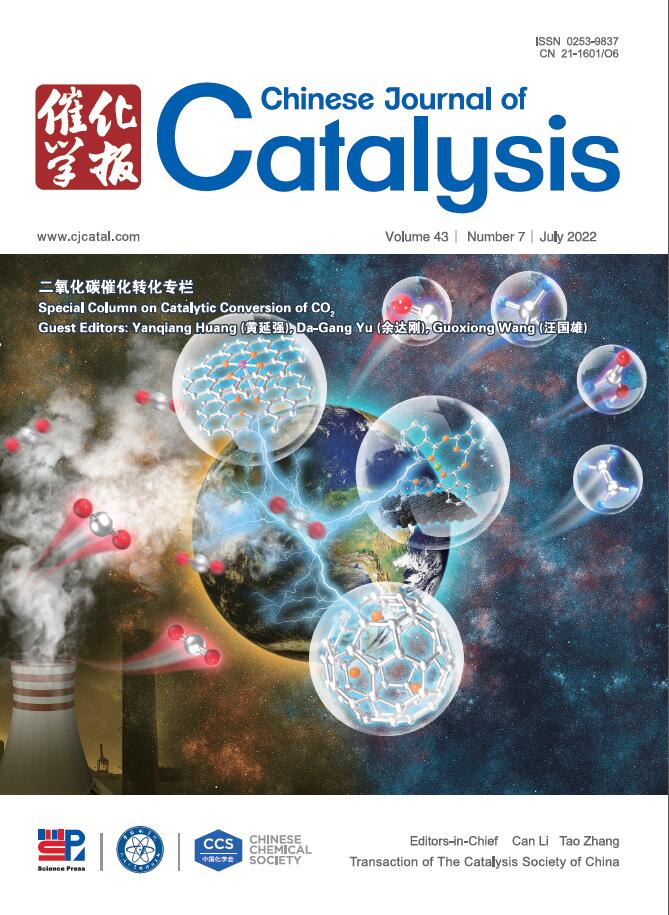Modulation of the electronic structure of CoP active sites by Er-doping for nitrite reduction for ammonia electrosynthesis
IF 15.7
1区 化学
Q1 CHEMISTRY, APPLIED
引用次数: 0
Abstract
The electrochemical conversion of toxic nitrite (NO2–) is a promising approach for the simultaneous removal of nitrogen contaminants and synthesis of ammonia (NH3). In this study, we present the Er-doping-induced electronic modulation of CoP integrated with nitrogen-doped carbon (CN) nanosheets supported on a titanium mesh (Er-CoP@NC/TM) for the electrocatalytic NO2– reduction reaction (eNO2–RR) for NH3 synthesis. The catalyst demonstrates a high Faraday efficiency of 97.08 ± 2.22% and a high yield of 2087.60 ± 17.10 µmol h–1 cm–2 for NH3 production. Characterization and theoretical calculations revealed that Er-doping facilitated the electronic modulation of CoP in Er-CoP@NC/TM, which regulated the adsorption behaviors of intermediates and was the rate-limiting step for the eNO2–RR, thereby enhancing the electrocatalytic performance. Quenching experiments and electron paramagnetic resonance tests suggest that both direct electrocatalytic reduction by active hydrogen and electron transfer are critical for the eNO2–RR for NH3 synthesis. Furthermore, Er-CoP@NC/TM exhibited high performance across a wide range of NO2– concentrations (0.05–0.1 mol L–1) and pH values (4–13). In addition, the catalyst demonstrated strong resistance to anions and a long cycle life in simulated wastewater environments. This study offers a powerful approach for the remediation of NO2– wastewater and recovery of valuable inorganic compounds.
求助全文
约1分钟内获得全文
求助全文
来源期刊

Chinese Journal of Catalysis
工程技术-工程:化工
CiteScore
25.80
自引率
10.30%
发文量
235
审稿时长
1.2 months
期刊介绍:
The journal covers a broad scope, encompassing new trends in catalysis for applications in energy production, environmental protection, and the preparation of materials, petroleum chemicals, and fine chemicals. It explores the scientific foundation for preparing and activating catalysts of commercial interest, emphasizing representative models.The focus includes spectroscopic methods for structural characterization, especially in situ techniques, as well as new theoretical methods with practical impact in catalysis and catalytic reactions.The journal delves into the relationship between homogeneous and heterogeneous catalysis and includes theoretical studies on the structure and reactivity of catalysts.Additionally, contributions on photocatalysis, biocatalysis, surface science, and catalysis-related chemical kinetics are welcomed.
 求助内容:
求助内容: 应助结果提醒方式:
应助结果提醒方式:


